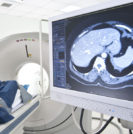I Want Only the Best Biopsy for my Prostate

You’re breezing along the railroad track of life. Like the steel wheels on a train, your choices in life have almost totally reduced friction and enhanced your midlife journey. Before you arrive at the next station, you’re at the peak of your career and in overall great health. Suddenly, where the steel meets the tracks, keep reading










